Between 2010 and 2013, Digital will replace Analogue PAL TV transmissions in Australia. There won’t be much choice as analogue is being switched off in stages across the nation. Analogue has served us well over the years, but like the typewriter, steam train and horse and cart, technology has progressed and old methods give way to the new.
The first black and white analogue television transmission commenced in Western Australia when TVW Channel 7 opened on Friday 16th October, 1959. Within six months, Perth was to receive its second television station when ABW Channel 2 opened on Saturday 7th May, 1960. It was another five years before STW Channel 9 opened on Saturday 12 June, 1965. It would be another twenty three years before Perth got its third commercial TV station NEW Channel 10 on on Friday May 20, 1988.
54 Years of Analogue TV – the End of an Era
WA TV History
This video traces the establishing of TVW Channel 7, ABW Channel 2, STW Channel 9 and NEW Channel 10 in Perth, Western Australia. It also covers the 54 years of analogue broadcasting from the four stations, which has been compressed into highlights as a tribute to the programs and those who made it all happen.
Analogue television provided a low definition television service until the introduction of digital TV in 2001, and would continue the operation in WA until its closure in 2013.
A lot of pioneering content and historic events were transmitted during the analogue 625 line television era in Australia. A system that was then superior to the United Kingdom’s 405 line and the United States 525 line systems. The UK’s 405 line system was considered high-definition at the time and remained in operation until 1985. Though in 1964, the BBC launched its BBC2 service on UHF using a 625-line system, following which 625-line PAL colour was introduced in 1967, eight years before Australia.
In the United States, the National Television System Committee came up with the ‘NTSC color standard’ in 1953, which some jokingly referred to as “Never The Same Color” twice. With the advent of digital television, US analogue broadcasts are also being phased out. Most US NTSC broadcasters were required by the The Federal Communications Commission (FCC) to shut down their analogue transmitters in 2009. Interestingly, the US chose a different digital broadcasting standard to Europe, Australia and New Zealand, when it opted for the Advanced Television System Committee (ATSC) system, whilst we went with the Digital Video Broadcasting-Terrestrial (DVB-T) method.
Meanwhile back in the pioneering era, television was generating considerable competition and Cinemas fought back with not only Technicolor films but also CinemaScope widescreen, the high definition 70mm format, stereo sound, early attempts at 3D, and a multitude of other innovations, film processes and film gauges, all described by some registered commercial name, such as VistaVision, Cinerama, etc.
Now television enjoys the benefits of these innovations with high-definition, widescreen, colour and even 3D, with the possibility of 4K and 8K resolution receivers coming on the market in the future.
Before all this, Western Australian television operated in isolation during the early days. A coaxial cable link was built between Sydney and Melbourne in 1963, and marked the first step in the establishment of effective national networking for Australian TV stations. This only impacted on the east coast of Australia, as WA would not have a direct (though expensive) television link with the rest of the country until 1970. Otherwise, programs could only be exchanged by freighting in films and videotape content.
The year after STW opened in 1965, there was the historic first live satellite transmission between Australia and the United Kingdom, which took place on Friday November 25th, 1966. During this, the ABC hooked up with the BBC and TVW Channel 7 hooked up with the UK commercial station ITN. This involved the world’s second commercial communication satellite, Intelsat II (nicknamed Early Bird 2), which inadvertently went into a non-synchronous orbit and gave the broadcasters a small window of opportunity to make this historic link-up.
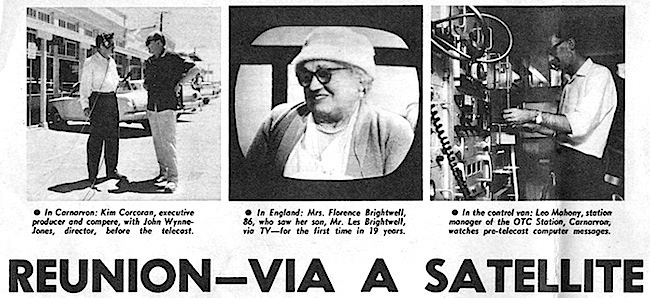
Regional Western Australia began experiencing the roll out of commercial television services when BTW3 Bunbury launched on the 10th March 1967, with the transmitter located at Mt Lennard (co-sited with the ABC). Then GSW9 Southern Agricultural (servicing Albany and Great Southern) launched on the 29th August 1968, with the transmitter located at Mt Barker (co-sited with the ABC). Meanwhile, the Australian Broadcasting Commission extended their national service to the country areas by conveying ABW2’s signal to an increasing number of regional TV transmitters across the State.
The historic “Our World” broadcast, became the first live global satellite television television production on the 25th June 1967, in a hookup involving fourteen countries. Unfortunately, WA could not participate in this live event as there was no television link to the eastern states until 1970.
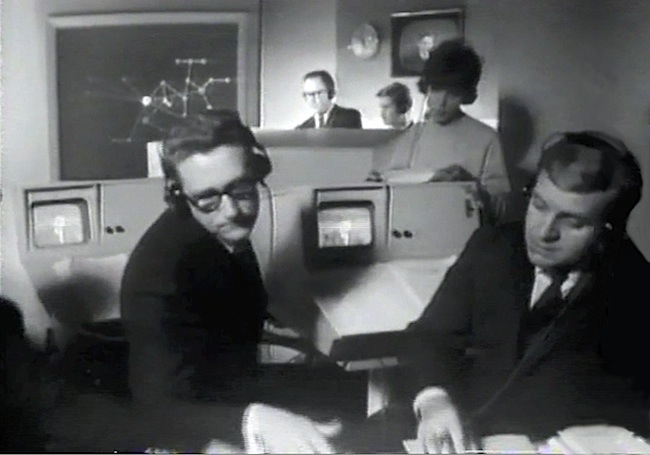
John West, James Dibble, Margaret Throsby and David Hawkes participated in the “Our World” broadcast
In 1969, Perth was able to view the Apollo 11 Moon landing when ABC engineers in Perth devised a solution to enable WA to benefit from the broadcast.
The signal from the Moon was received in Australia by the NASA Honey Suckle Creek Tracking Station, with the Parkes Observatory used to relay communication and telemetry signals to NASA, providing coverage for when the Moon was on the Australian side of the Earth.
Earth stations receiving the signal from the Moon included the 64 metre Goldstone antenna in California in the USA, the 26 metre antenna at Honeysuckle Creek near Canberra in Australia, and the 64 metre dish at Parkes in New South Wales, Australia.
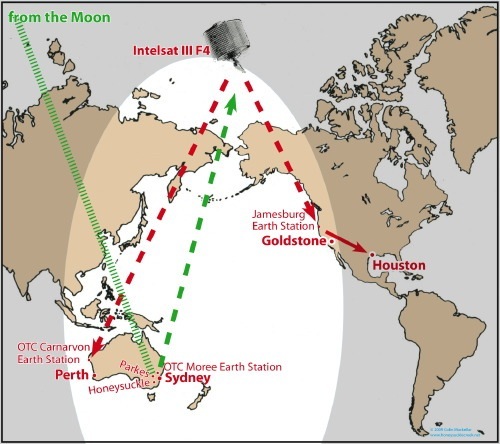
The television signal path which enabled Perth to see the moon landing was devised by ABC engineers in Perth
NASA’s Honey Suckle Creek Tracking Station then sent the moon vision to the OTC Moree Earth Station in NSW, for uplink to the Intelsat III F4 satellite above the Pacific Ocean, which passed it on to not only the Jamesburg Earth Station in the US, but also the OTC Earth Station at Carnarvon in WA, which then sent it along the coaxial cable to Perth TV audiences.
This enabled not only the ABC, but also commercial TV viewers to see the live TV of Neil Armstrong’s first steps on the Moon.
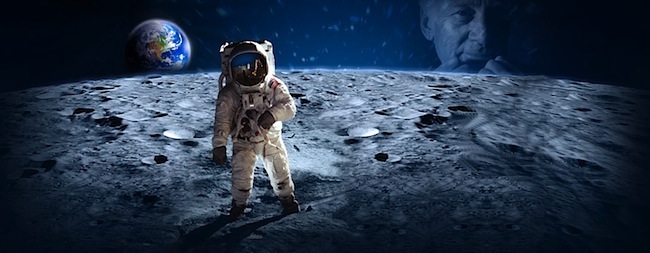
The Apollo 11 moon landing took place on 21 July 1969
In the first few minutes of the broadcast, NASA alternated between the signals being received from its two stations at Goldstone and Honeysuckle Creek, searching for the best quality picture.
A little under nine minutes into the broadcast, the TV was switched to the Parkes signal. The quality of the TV pictures from Parkes was so superior that NASA stayed with Parkes as the source of the TV for the remainder of the 2.5 hour broadcast.
As the 1960s drew to a close and the 1970s began, more regional stations opened across the State. The installation of translator stations gave rural viewers over a much wider area access to television. Some stations serviced vast areas with only small populations.
The cross nation telecommunications link was established before a sealed road when the East-West microwave broadband system was introduced in 1970.
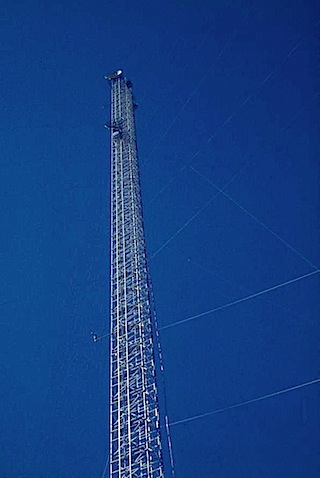
Ivy Tanks Nullabor Telecommunications Tower
VEW8 Kalgoorlie, plus the VEW3 translator at Kambalda (Red Hill) started in November 1971.
GSW10 Southern Agricultural (servicing an Albany blind spot) was launched in August 1974, with a translator on Mt Clarence in Albany (getting the signal via Mt Barker).
In 1975, colour television was formally introduced into Australia.
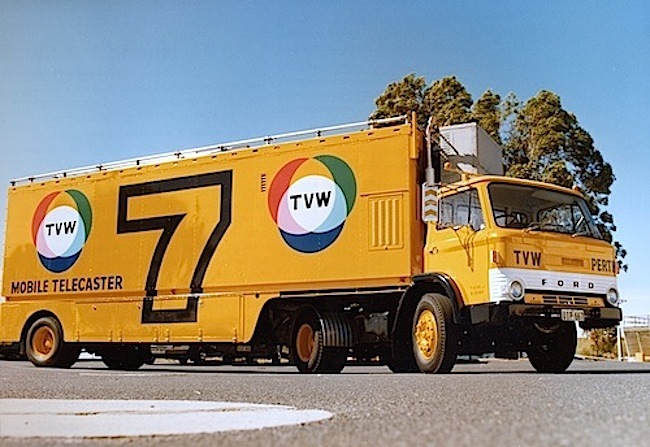
TVW’s Colour Outside Broadcast Van
The isolation of Perth was gradually being reduced by not only improved telecommunications links with the rest of the country, and flowing on from that the rest of the world through growing satellite traffic, but also the belated sealing of the Eyre Highway which crosses the continent, connecting the east to the west. It was finally completed in 1976.
Though AMPEX developed the first mass produced professional videotape machine in 1956, it was not until 1976 that the first VHS domestic video cassette recorder was introduced. At first there were two formats, VHS and Betamax. Betamax was introduced a year earlier and even though it produced better quality, VHS won the marketing war to become the dominant home videotape format.
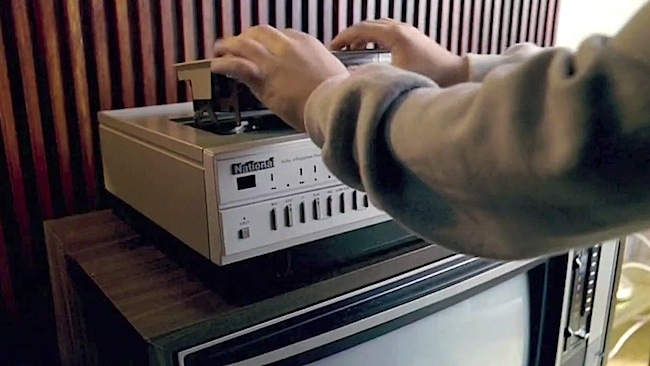
GTW11 Geraldton was launched in 1977.
In 1980, Multicultural Television began in Sydney and Melbourne on VHF channel 0 and UHF channel 28 and gradually spread across the country to become known as the Special Broadcasting Service (SBS).
1986 saw the introduction of a new, domestic satellite called AUSSAT which enabled people in remote and rural Australia to receive TV, radio and reliable telephone services for the first time. TV and radio broadcasters were now able to share programming in real time and businesses would be able to create data links between distant premises. This paved the way for TV networking on a grand scale, which saw the beginning of the end for autonomous stations as ownership become more centralised.
In March 1986, SBS Television used AUSSAT to bring its national programming into Perth for broadcast on UHF.
NEW Channel 10 in Perth opened on Friday May 20th, 1988.

Community television was introduced to Sydney, Melbourne, Brisbane and Adelaide in 1994, broadcasting on ‘Channel 31′. In 1999, Access 31 started broadcasting in Perth but it was wound up in 2008.
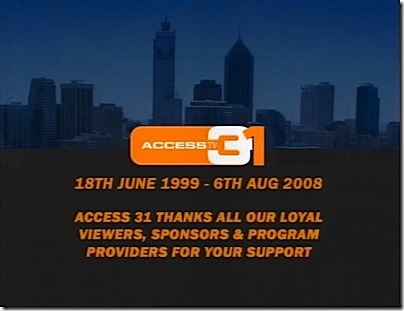
In 1995, optical disc program storage came with the introduction of the standard definition Digital Versatile Disc (DVD) format, which resulted in the VHS tape format losing market share. It was versatile as the computer industry also adapted the format for data recording and storage.
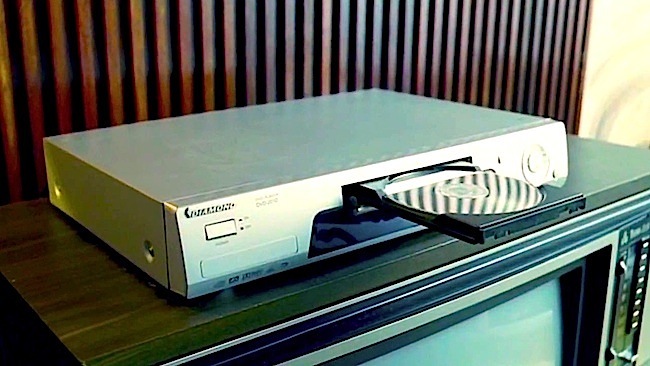
Digital Versatile Disc (DVD)
Digital terrestrial television in Australia homes commenced on the 1st of January 2001, in Sydney, Melbourne, Brisbane, Adelaide and Perth. Digital broadcasting has a number of enhancements, primarily higher-quality picture and sound, additional channels, datacasting (news, weather, traffic, stock market, and other information) but also video program guides and high definition.
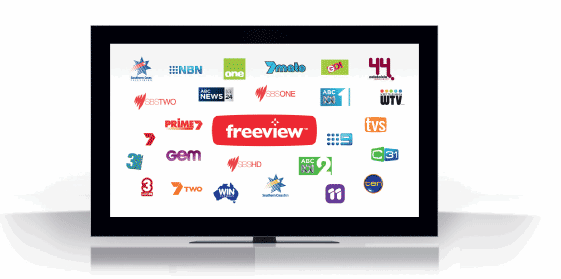
Free to Air TV in Australia
ABC1 became the first digital ABC TV channel, initially broadcasting in high definition. Then ABC2 was launched in 2005, as a standard definition digital-only channel that shows repeated programs from ABC1, as well as some original content including news programs, children’s shows, animation, and music shows. December 2009 saw the launch of the standard definition ABC3 digital-only children’s channel. In 2010, ABC News 24, Australia’s first free-to-air news dedicated channel, replaced the former ABC high definition simulcast of ABC1. Then ABC 4 Kids, a digital shared channel began on the 2nd of May 2011.
Since 2001, the commercial stations also expanded their digital services.
Seven’s prime station 7 and 7TWO remain standard definition, with 7Mate being the high definition offering.
Prime7’s advertorial channel TV4ME is also standard definition.
Nine’s prime station 9 and GO remain standard definition, with GEM being the high definition offering.
TEN’s prime station 10 and ELEVEN remain standard definition, with ONE being the high definition offering.
TVSN the Television Shopping Network began broadcasting on standard definition after they partnered with Network Ten to make the channel available to metropolitan viewers, and with affiliate Southern Cross Ten to regional viewers.
SBS One, SBS Two are standard definition stations with SBS HD in high definition.


NITV is the National Indigenous Television standard definition station.
WTV or West TV is now the standard definition community station license holder in Perth.
In 2010, West TV or WTV, the current free-to-air community television station in Perth began broadcasting in standard definition digital format on logical channel 44.
WTV Perth Promo Reel
WA TV History
West Television (WTV) is a new Western Australian free-to-air TV channel that is a community focused broadcaster aiming to reflect Australia’s multicultural diversity and provide an alternative local view platform.
The high definition Blu-ray Disc player was officially released in 2006, with sales slower at first than DVD, until High Definition Television (HDTV) sets became common. But now Blu-ray faces competition from video on demand, with people downloading content over the internet.
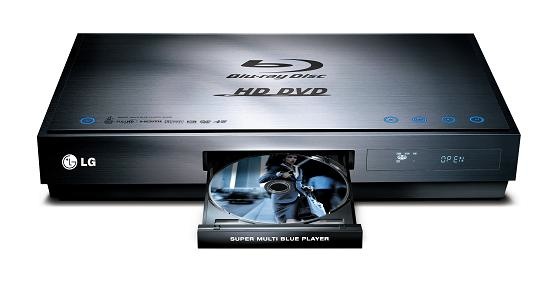
Blue-ray Player
From a domestic program recording point of view, hard disk-based digital video recorder (DVR) systems now allow for many hours of recording, due to the ever increasing storage capacity of hard disks, with the cost to size ratio improving all the time.
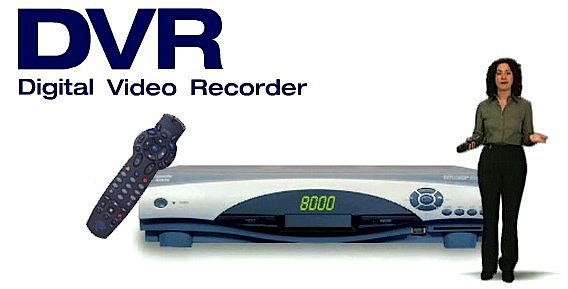
Digital Video Recorder (DVR)
On the 16th of April 2013 over 722,000 households across Perth joined Australia’s digital TV viewing revolution when the analog TV signals were switched off. There are now more than 3.7 million households across Australia watching digital TV.
Channel Nine analogue went off overnight, SBS was next off at 0859:12, followed by TEN at 0859:15, the ABC at 0859:24 and finally Seven at 0859:31 on the morning of April 16th.
On the 25th of June 2013 analogue TV will be permanently switched off across areas of regional and remote WA and free-to-air TV will be broadcast in digital-only.
So what does the future hold?
From a consumer point of view, the next big trend seems to be to watch TV when you please. For many of the younger generation that means on the move, on smart-phones and tablets, and ‘on-demand’ at a time that is convenient to the viewer.
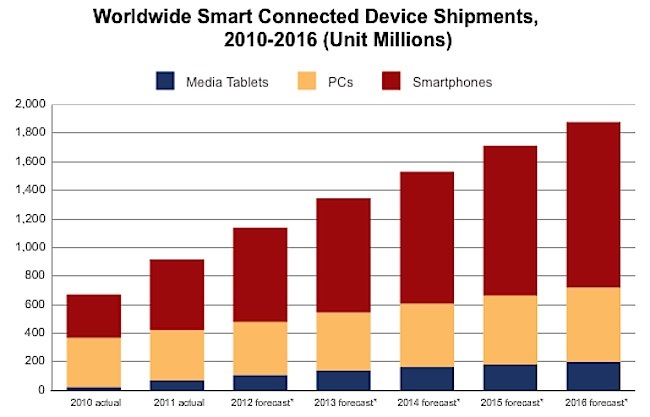
From a manufacturer point of view 4K (2160p) and 8K (4320p) Ultra high-definition is being pushed to encourage viewers to buy new receivers, though content first needs to be available for that to happen.
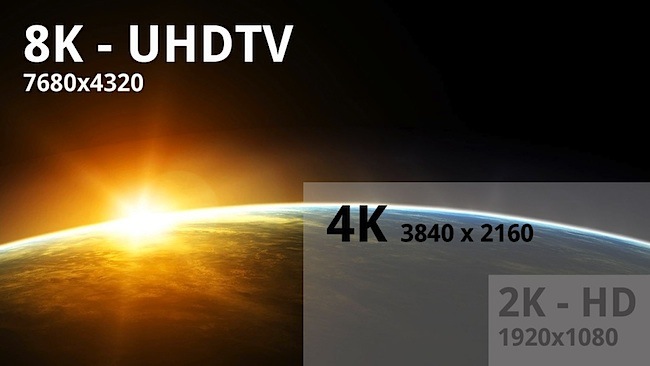
8K Ultra high-definition
Right now the US broadcast networks are carefully preparing their fall schedules, mulling over which show will perform best in what timeslot. But according to Media Life Magazine, such considerations are becoming passé for many TV viewers as an increasing number are setting their own TV schedules, according to a new study from the Harris Poll, conducted by Harris Interactive. It finds that 78 percent of Americans have watched TV shows via new technology such as Digital Video Recorders (DVRs), online streams, video on demand or buying full seasons of programs on DVD. An example is Netflix, where members watched more than four billion hours of video during the first three months of 2013, according to the company’s CEO Reed Hastings, who took to Facebook to publish the milestone.
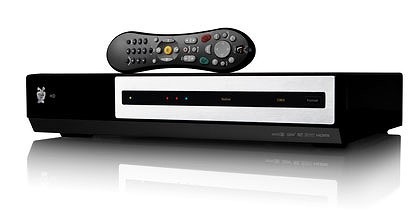
TiVo Digital Video Recorder
One form of program delivery is referred to as Over-The-Top Content (OTT) where consumers access programs through internet-connected devices such as PCs, laptops, tablets, smart-phones, set-top boxes, Smart TVs and gaming consoles such as the Wii, PlayStation 3 and Xbox 360. Its content that arrives from a third party and is delivered to an end user device, leaving the internet provider responsible only for transporting IP packets. In the US, the over-the-top video market grew 60% last year to pass $8 billion, driven by companies like Netflix, Hulu, Apple and Amazon, according to new figures by ABI Research, who predict that as mobile and other connected devices continue to spread, the market will pass $20 billion by 2015.
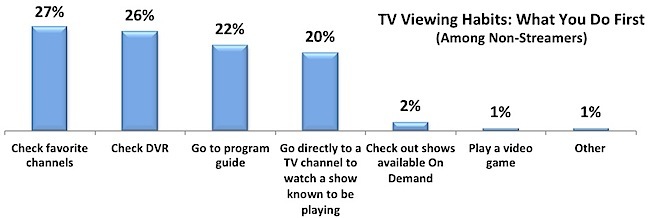
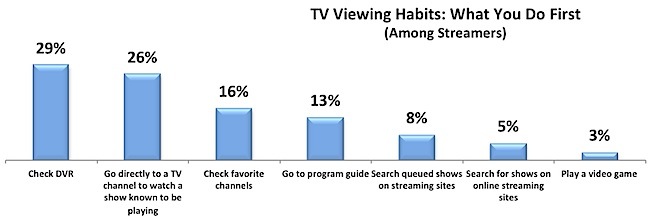
YouTube is also looking a repositioning itself to take on broadcast TV, now that their audience has hit a billion viewers a month, according to YouTube’s global director of platform partnerships, Francisco Varela, whilst speaking at TV Connect (formerly known as IP&TV World Forum) in London. Its a venue where broadcasters, telcos, content providers and OTT players can meet over three days.
YouTube Vice President Robert Kyncl says the company is also considering allowing content creators to charge a subscription fee. He points out that this could bring even more content to YouTube and provide their creators with another vehicle to generate revenue from their content, beyond the rental and ad-supported models YouTube currently offer.
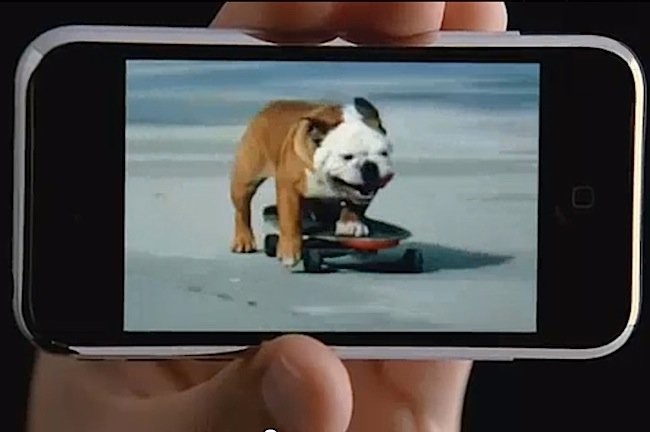
Interestingly, short YouTube videos of cute kittens in embarrassing situations, dogs on skateboards or babies biting their brother’s finger can attract more eye balls than the highest rating TV shows.
Meanwhile, a new study from Temkin Group, a research and consulting firm based in Massachusetts, finds that people spend nearly as much time online as they do watching television. The advertising dollars are more spread these days, though the internet still has a long way to go before they match television advertising, but in terms of the time people spend with the Internet and television, they have almost caught up. The point is that the change in the advertising dollar is trending towards the internet, and Google in particular.
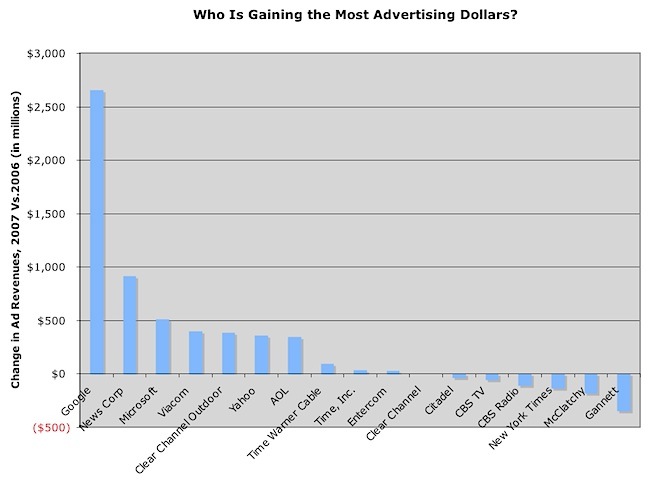
One positive trend for TV is in an international study shows that a majority go to television first for breaking news. The internet is the second source of choice for most respondents. A further breakdown shows that laptops were the second highest “primary and first device” when it comes to breaking news, with 24 percent of respondents indicating this as their initial port of call. This is followed by smart-phones with 18 percent, tablet devices with 7 percent, radio with 5 percent and newspapers with 3 percent.

A lot of this will relate to how fast a particular media can respond. Live television pictures coming from the Twin Towers, or Boston Marathon tragedies will place the viewer there as news is being made, whilst a web page needs to be written and formatted before it is available. But once a streaming feed is established, its much the same as live TV. Though the time taken to set up a broadcast or web page is minuscule compared to preparing, printing and distributing a newspaper.

TV News puts the breaking World events in your grasp
The popularity of smart-phones, tablets and other portable devices is on the increase among younger generations, the households can look forward to greater increases in picture quality as television developments move from HD to Ultra high-definition. This will make greater demands on the broadcasting system, transmitters and receivers, with the technology coming in 4K and even 8K resolutions. It will be such that the picture quality will soon be greater than most eyes can observe.

Picture resolution will soon be more than the eye can resolve
Some youngsters don’t see the point, as they tend not to view their content on the lounge room big screen. With their better eye sight, a high resolution screen on a tablet will do the job, with stereo earphones giving them privacy. When they are mobile, their smart-phone fills the need.
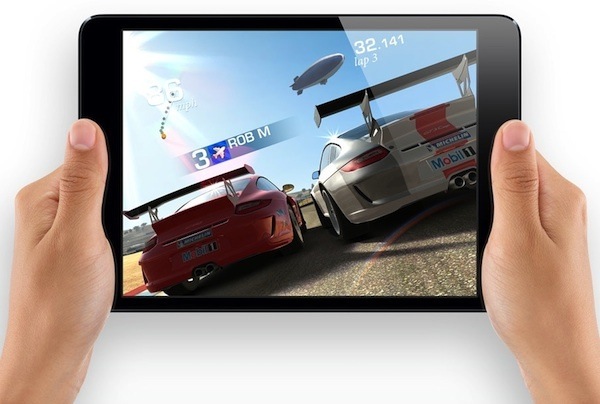
Internet bandwidth speed and cost will be a big factor here. The out and about generation will make more demands on the mobile networks, though downloading may take place in the home for storage and then sharing with their portable devices. There is also a big push for people to use the ‘cloud’, which really means storing their content at a big data centre that can be accessed from anywhere.

All of these innovations are rule changers and put more pressure on the old business models and traditional media. New concepts are being dreamt up daily by smart young entrepreneurs, so its becoming increasingly difficult to guess what the next big thing will be. Amazon (1995), eBay (1995), Google (1998), Facebook (2004), YouTube (2005) and Twitter (2006) are all relatively new manifestations to take the world by storm.







